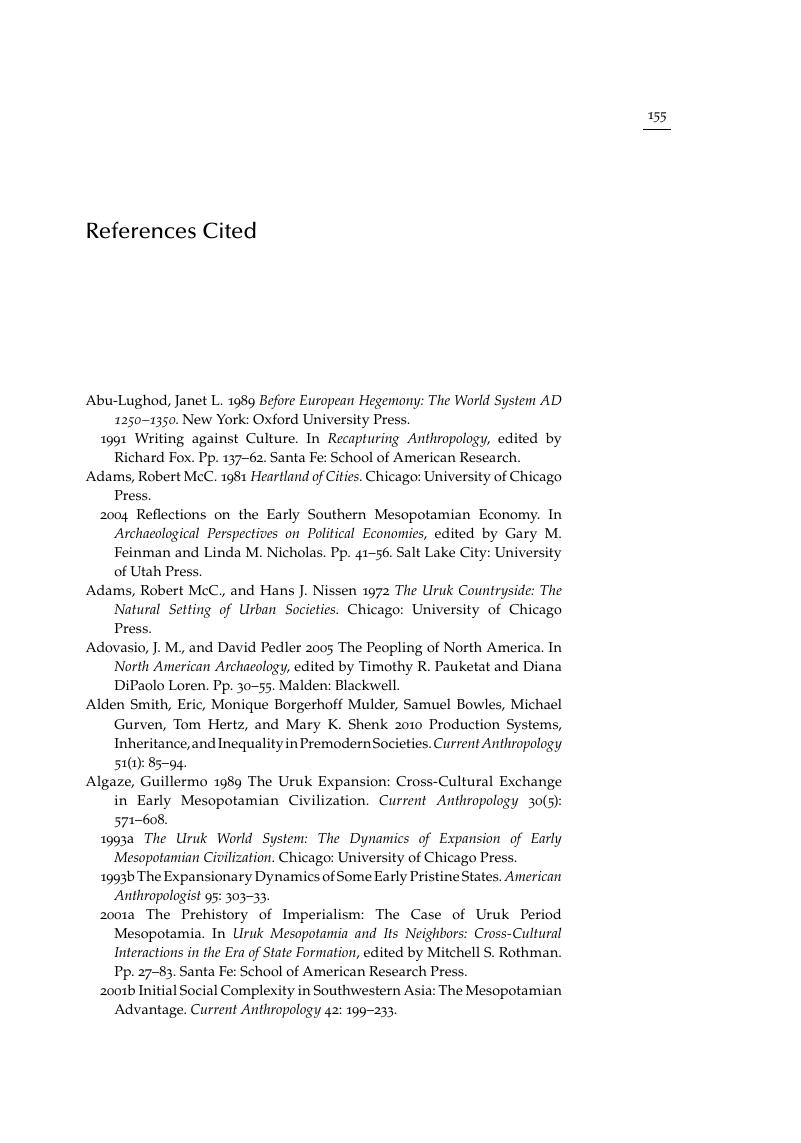Book contents
- Frontmatter
- Contents
- List of Figures and Tables
- Acknowledgments
- 1 Modernity's Greatest Theft
- 2 How to Pluralize Globalization
- 3 Cities and the Spread of the First Global Cultures
- 4 Uruk-Warka
- 5 Cahokia
- 6 Huari
- 7 But Were They Really Global Cultures?
- 8 Learning from Past Globalizations
- References Cited
- Index
- References
References Cited
Published online by Cambridge University Press: 06 December 2010
- Frontmatter
- Contents
- List of Figures and Tables
- Acknowledgments
- 1 Modernity's Greatest Theft
- 2 How to Pluralize Globalization
- 3 Cities and the Spread of the First Global Cultures
- 4 Uruk-Warka
- 5 Cahokia
- 6 Huari
- 7 But Were They Really Global Cultures?
- 8 Learning from Past Globalizations
- References Cited
- Index
- References
Summary

- Type
- Chapter
- Information
- Globalizations and the Ancient World , pp. 155 - 194Publisher: Cambridge University PressPrint publication year: 2010



